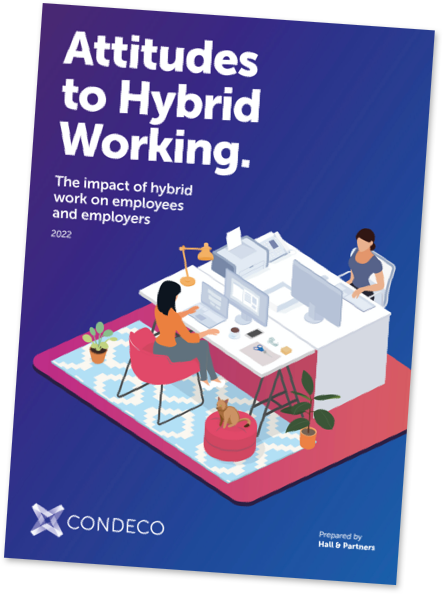
People globally spend 40 hours a week — or more — in a work environment, making it worth examining. Since 2020, many companies adopted remote, hybrid, and flexible working models. Due to this, employers and employees must navigate different conditions than they once did.
Work-life balance is increasingly important to workers at all levels and job categories. Post-pandemic, employee well-being, and mental health are front-and-center issues, along with support for business sustainability.
Here are some of 2024’s most interesting and fun facts about work productivity, working from home, and the latest workplace trends — including psychological facts about work.
The average worker spends over 90,000 hours working over their lifetime, so finding job and workplace satisfaction matters
It’s true. Workers spend over 90,000 hours of their lives working.
Top consulting firm McKinsey & Company reports, “The average person will spend 90,000 hours at work over a lifetime, so it’s no surprise that job satisfaction, or dissatisfaction, can significantly affect your life.”
So, how do you find job satisfaction and happiness at work? Annie McKee, author of “How to Be Happy at Work: The Power of Purpose, Hope, and Friendship” has studied this and reports there is a formula:
Career happiness = (Freedom + Challenge + Balance – Stress) x Meaning
Career coach Sarah Archer agrees with McKee’s formula, “Employers are waking up to the fact that contented employees are linked to productivity and performance. More importantly, though, we are seeing the connection for ourselves between our career and our mental health.”
-
Dress code and workplace productivity are not mutually exclusive: 61% of employees are more productive when the dress code is more casual
In 2018, many businesses embraced a casual Friday dress code, and with good reason. Even then, research showed that employees work more effectively when able to dress more comfortably.
And it appears this trend took hold — especially during the pandemic, when working from home, employee retention, and psychological safety became top priorities. Years later, when offering multiple working models, some organizations struggle to balance employees’ sense of what is acceptable to customers and company values.
The distinction between casual and business casual got lost during the pandemic era. While pajamas are comfortable and might have passed previously during video calls, they aren’t acceptable anymore. Not for remote work, hybrid work, or in the office. Business casual must be reintroduced to workers. It’s a win-win for employers and employees alike.
“It is important that employers adapt to the shift toward hybrid work, while still ensuring that employees present a clean, neat, and professional appearance that is acceptable to clients and reflects the company’s image,” explains Rudi Julius, a workplace specialist and attorney with Thompson Hine.
-
Video conferencing and video meetings are here to stay: Video calls on Microsoft Teams have increased 1000% since the pandemic
Video meetings and collaboration software such as Microsoft Teams are now a major part of our daily work life in hybrid environments. With over 280 million users, Microsoft Teams helps employees reach global colleagues in ways previously impossible without a hefty airfare.
And as organizations look to increase collaboration and strengthen relationships, video meetings and conferences are an obvious choice. Between online chat, file sharing, integration with calendars, and the full suite of office tools workers use daily, it’s unsurprising how widespread the adoption has become.
-
Activity-based working boosts employee workplace satisfaction and productivity
What exactly is activity-based working (ABW)? It’s a way of working that gives employees access to many different workspaces — and technologies — to use and reserve for specific activities, such as structured meetings, informal conversations, and individual, private work that requires quiet areas.
With hybrid and flexible work, ABW allows companies to move toward a more shared workspace environment where 1:1 desk space is no longer necessary, as long as you have an organized system such as desk booking, room booking, and other workspace reservations.
Veldhoen + Company research found a 17% increase in workplace satisfaction after companies transitioned to ABW. Employees are also more productive individually and collectively. ABW increases individual productivity by 13% and team productivity by 8%.
-
Hybrid work models are used by most high-growth companies in 2024
Full-time on-site work from an office “is expected to remain a relic of the past with only two in 10 remote-capable employees currently working entirely on-site and about the same number expecting to be entirely on-site in the future,” reported Gallup.
Only 6% want to work entirely on-site in the future. What does it mean if more than 90% of 70 million employees prefer not to return to the office full-time office? Or 63% of high-growth companies have adopted and kept the hybrid working model. Simply put, hybrid work is here to stay.
Ignoring workers’ preference for the hybrid model may result in engagement taking a hit. “Employees who don’t work in their preferred location have significantly lower employee engagement, alongside higher burnout and desire to quit,” found Gallup. “They don’t feel well-positioned to do their best work or live their best life.”
-
The impact of Artificial Intelligence (AI) on jobs is expected to be a net positive over the next 4 years
A 2024 IMF study states AI will impact almost 40% of jobs around the world. Robots and automated functions are becoming a regular workplace feature as they take over the more mundane and manual duties for us, giving employees more space to work on more priority and time-consuming tasks. Chatbots, learning language models (LLM) such as ChatGPT and other AI, and systems that help increase process automation, including robotic processing assistants (RPA), are becoming commonplace.
While robotics and AI are the future, the workplace still requires real human interaction, not to mention the type of critical thinking and feeling that only humans are capable of. Our fear of being replaced by automated work processes dates to the early 1800s, and our importance has consistently remained. Most robotics and AI will always need to partner with human initiative, interaction, and maintenance.
“We expect novel technologies to be adopted without considering all of the relevant contextual impediments such as cultural, economic, and government arrangements that support the manufacturing, sale, and use of the technology,” says BYU sociology professor Eric Dahlin.
Dahlin’s research found that only 14% of workers say they’ve seen their jobs replaced by AI. Meanwhile, the World Economic Forum expects AI to become a net positive on jobs over the next four years.
“Agriculture technologies, digital platforms and apps, e-commerce, digital trade, and AI are all expected to result in significant labor-market disruption, with substantial proportions of companies forecasting job displacement in their organizations, offset by job growth elsewhere to result in a net positive” noted the World Economic Forum 2023’s report.
-
Remote working continues to trend in the US: 12% of workers are fully remote, and 28% are hybrid
These are monthly statistical samples of 10,000 US workers conducted by economists at Stanford University and the University of Chicago. It’s called the Survey of Working Arrangements and Attitudes and began in 2020.
The latest research, which focused on tracking the trends of working from home, finds that working from home is more common in major cities than in smaller cities and towns. It also finds employers offer fewer fully remote jobs and more fully onsite jobs than employees currently desire.
Stanford reports remote work is more prevalent in the tech, finance, and professional and business services sectors. Interestingly, workers spend more of their workday in formal training and professional development when they come to the office.
-
Email volume: 347.3 billion emails are sent each day across the globe – with more on the way
That’s a 4.2% increase from 2022, when 333.2 billion were sent daily. Moreover, the number of emails sent daily is expected to increase to 376 billion emails by next year. That’s nearly a 13% growth, according to Zippia.
The average worker gets an average of 121 emails per day and sends nearly 40 on their own. We all know what it’s like to be buried in emails, but are they becoming more of an interruption than a helpful facet of the workplace?
According to UC Berkeley research, we’re being interrupted at work once every 8 minutes, so it’s no wonder many of us are looking for new ways to ramp up our productivity levels.
-
Nearly 90% of workers are burned out on online chat and email inbox volume
A survey by Wakefield Research found that 89% of white-collar workers said sorting through unopened emails and navigating incoming Microsoft Teams messages are among the most unpleasant parts of working remotely or hybrid.
According to Forbes, “When we hit information overload, it decreases our productivity and ability to make decisions — often referred to as executive functioning,” says Carla Bevins, a professor of business communications at Carnegie Mellon University.
In the same Wakefield Research study, 51% of employees 40 and under claimed they would consider leaving their job because of too many emails or Teams messages.
-
42% of Millennials would only work for a company that makes sustainability a priority
More than a third of employees think instituting sustainability practices at work would boost productivity rates and a company’s position as a leader, while opening additional opportunities for innovation. From a generational perspective, 42% of Millennials, 30% of Gen-X, and 21% of Baby Boomers state they will only work for an employer prioritizing sustainability.
Eptura recently spoke with long-time industry leader and IFMA Fellow, Paul Doherty on our Asset Champion podcast. We asked him what asset management and facility management leaders should focus on today:
“People, period,” said Doherty. “Everything else I’m going to say doesn’t matter. It’s your people… A lot of this has to do with sustainability. And sustainability is not just about the environment. It’s about sustainable mental health. It’s about sustainable economics.”
To Doherty, sustainability is a mindset that reinforces the ideas of well-being in the totality of our work and lives. But there are also real business benefits to designing sustainability into your workplace experience today, such as lowered energy cost, employee satisfaction, and talent attraction.
-
76% of employees who currently work hybrid want to continue with this model
A significant reason hybrid work is proving popular in the long term is the benefits it provides employees regarding work-life balance. Our research identified reduced commuting time and better home life management as the two most cited benefits of the hybrid model. 7 out of 10 employees agree that the model shows a company cares about worker needs. Offering hybrid work as an option has a positive impact on how much employees feel their employers value their mental and emotional well-being. 69% of corporate employees — whether working remotely, hybrid or in the office full-time — agree that hybrid work shows employers take employee well-being and productivity into consideration. This figure rises to 76% among those who are already hybrid workers. The numbers don’t lie. Employees want the hybrid model to stay.
-
45% of US employees see going to the office as a means to improve relationships with colleagues, clients, and vendors
We commissioned a global survey of 6,000 workplace leaders and employees. The following statistics on how US employees view the office grabbed our attention:
- 45% see the office as an ability to meet with colleagues, clients, and vendors
- 36% believe coming into the office helps improve company culture
- 35% say they look to the office for a productive, well-equipped environment
- 32% feel coming to the office helps with work-life balance
Human connection tops everything. And right behind that, look at the value the office plays in company culture — which is absolutely driven by peer-to-peer human connection. There’s no workplace culture without people creating and nurturing it.
Go deeper with Eptura’s “Workplace Predictions Report.”



